Years ago in handgun shooting competitions, a few competitors started installing red dot sights (RDS) on their firearms to give them an edge in winning matches. At first, the RDS were adequate, but had a limited life. They were also fairly bulky and, generally, a gunsmith’s services were required to mount them.
As is often the case, these RDS innovations pursued by match competitors drew the attention of people who use guns in real life-and-death situations. It took years for the concept of mounting an RDS on a serious gun for self-defense to become more than a novelty, but now, several production gun manufacturers offer guns ready to mount an RDS. In fact, some law enforcement agencies permit officers to carry RDS-equipped duty weapons.
With the increase in the popularity of RDS on handguns, retailers are seeing more handgun models that come from the factory equipped with an RDS or are ready to have one mounted. Smart retailers realize that with this new popularity comes the opportunity to provide customers with the knowledge and service that may lead to additional sales of guns and accessories.
Why A Red Dot?
The greatest advantage of the RDS compared to traditional handgun iron sights is that it eliminates the need to align four points — eye, rear sight, front sight and target — in order to properly aim the handgun. With an RDS, merely putting the red dot on the target effectively aims the handgun, and it doesn’t matter where in the RDS’ window the red dot appears. If the dot is on the target, the gun is pointing at it. And that makes aiming much faster.
Another feature of the RDS compared to iron sights is that the shooter’s focus can remain on the target because the dot appears to be emanating from it. So, for shooters with failing eyesight, once the target is identified, there is no need to quickly change focus from the target to the front sight in order to aim.
Accuracy can also improve with the use of an RDS. When using iron sights, the shooter must place the front sight in front of the desired point of impact — which obscures the target — or use a six-o’clock hold where the front sight is just below the intended impact point. The front sight must be centered in the rear sight, and the top of both sights must be in line. The RDS, on the other hand, provides the shooter with a more precise aiming point that enhances accuracy in most cases, depending on the size of the dot, range to target and relative size of the target.
Freddie Blish, a retired Marine Corps Lieutenant Colonel and instructor at the world-known and highly respected Gunsite Academy shooting school, said generally at ranges of 15 yards and greater, the RDS usually is more accurate than iron sights. At longer ranges, targets appear to be smaller, but the dot defines a more precise aiming point than do iron sights.
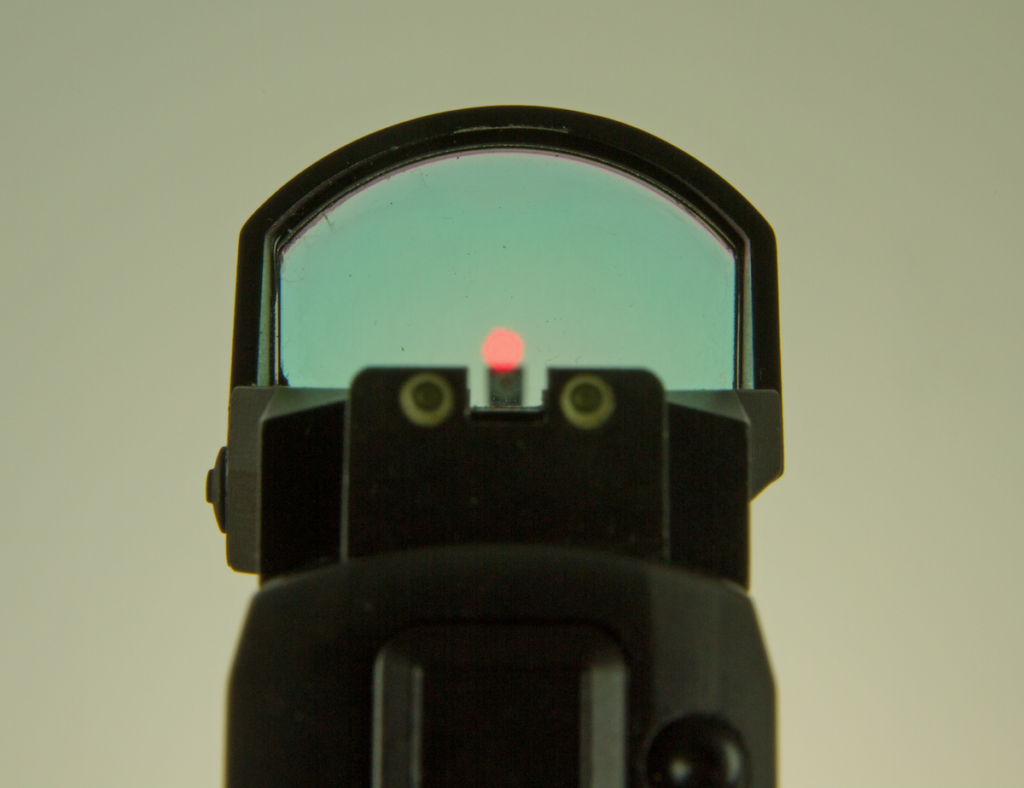
With taller sights, it is possible to co-witness the red dot with iron sights. An RDS makes blurring of the iron sights no longer a concern.
Are They Perfect?
In the beginning, RDS were bulky and not well known for durability. But sizes have been reduced and they are now more shock-resistant. Exact service life is hard to quantify, but some well-versed experts indicate that some of the RDS available today may last for 3,000 rounds or more. Some may last longer and some shorter, but many handguns will never be shot enough to wear out the RDS.
While an RDS can replace iron sights on a handgun, a shooter should still learn how to use iron sights with confidence. Not every handgun has, or in the near future is likely to have, an RDS, so developing competence with iron sights is good advice for any shooter. Besides, as robust as some of the RDS are, they may fail as any electronic device might.
When an RDS is mounted, iron sights of normal height are generally obscured by the RDS base. A solution to this problem is taller iron sights like those built for use with a suppressor. Those sights may be high enough to view the iron sights through the RDS window and may even allow the dot to be co-witnessed with the iron sights.
For example, the SIG Sauer P320RX and the Smith & Wesson M&P C.O.R.E. (Competition Optics Ready Equipment) are equipped with tall sights that permit co-witnessing. The Springfield XD(M) OSP, however, comes with standard-height iron sights that cannot be viewed through the supplied Vortex Venom RDS. To compensate for that, the Venom has two white vertical marks on the rear of the sight that roughly facilitate aiming if the RDS stops working.
Mastering The RDS
For those shooters who are accustomed to using iron sights, switching to an RDS may require more training than that required for a new shooter starting fresh with an RDS.
Retired sheriff Ken Campbell, chief operating officer at Gunsite Academy, said, “They [RDS] seem initially slower as the shooter gets used to chasing the dot, but quicken with proper practice.” Campbell said more Gunsite clients in recent years have guns equipped with RDS. Blish added that to help students acquire a faster sight picture, Gunsite instructors teach students to look for the iron sights on presentation, just as they would without an RDS.
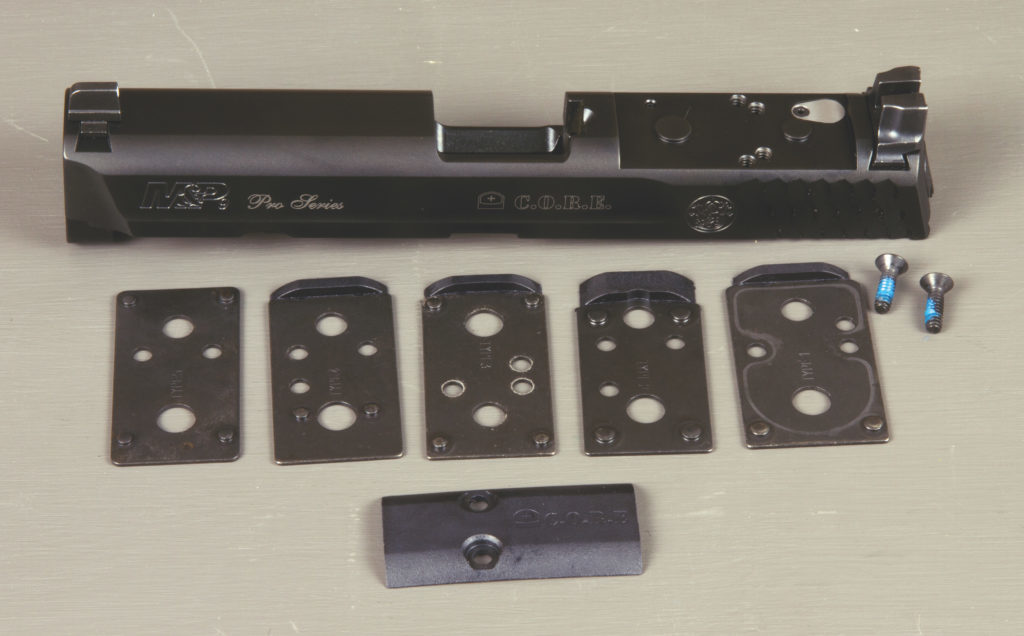
Some RDS-ready handguns are supplied with a number of adapter plates like these from S&W. They allow the mounting of a variety of RDS.
Retrofitting
The Smith & Wesson M&P9, SIG Sauer P320 and Springfield XD(M) were originally introduced with iron sights, but are now available with the ability to accept an RDS. Other guns that are not ready to mount an RDS may be suitable candidates for a gunsmith to mount one though.
Some serious fighting handguns used for self protection are now equipped with an RDS, and it is likely that more will be introduced. Retailers have the opportunity to educate customers about the benefits of a handgun-mounted RDS and profit from the sale of this interesting evolution in self-defense equipment.
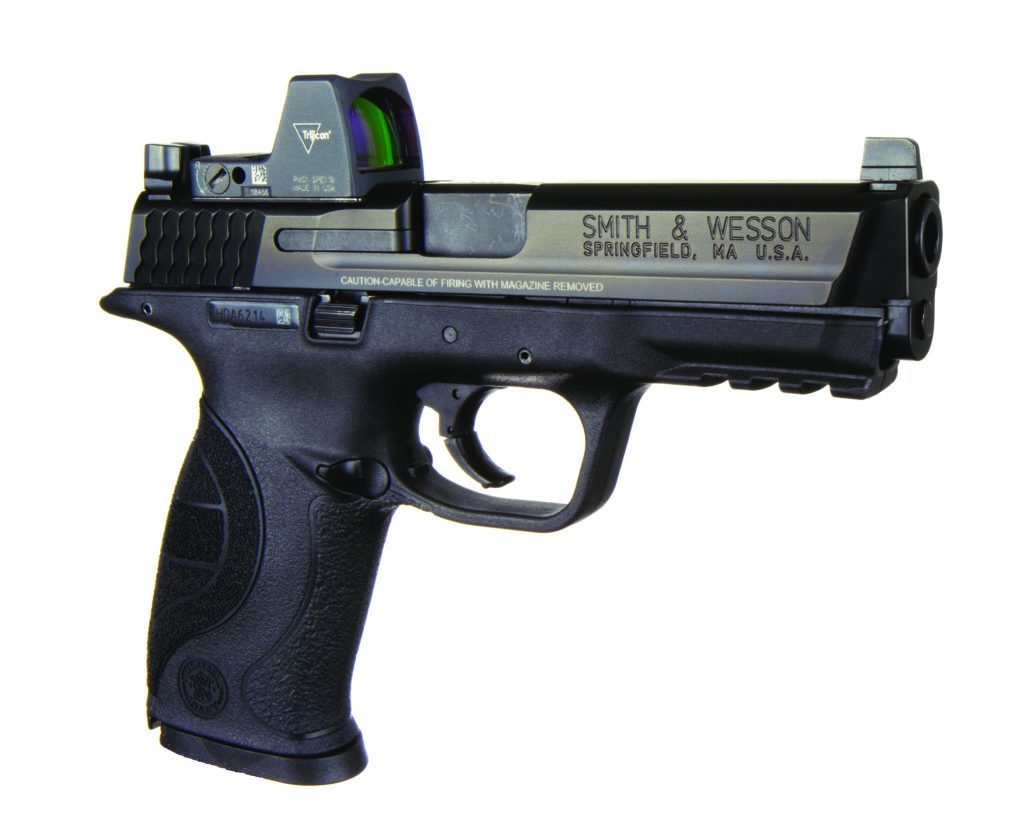
Smith & Wesson M&P9 C.O.R.E.
Smith & Wesson M&P9 C.O.R.E.
From the Smith & Wesson Performance Center comes the M&P9 C.O.R.E. Even though this handgun is billed as a competition gun, the M&P9 series of handguns are in use by some law enforcement agencies.
The C.O.R.E. comes with adapter plates that allow attaching of one of six different RDS. The M&P series of semi-automatic handguns are known for adaptability and come with three backstraps so the grip size can be optimized to suit the shooter. The gun also has an accessory rail and suppressor-height three dot sights, allowing the iron sights to be co-witnessed with the RDS.
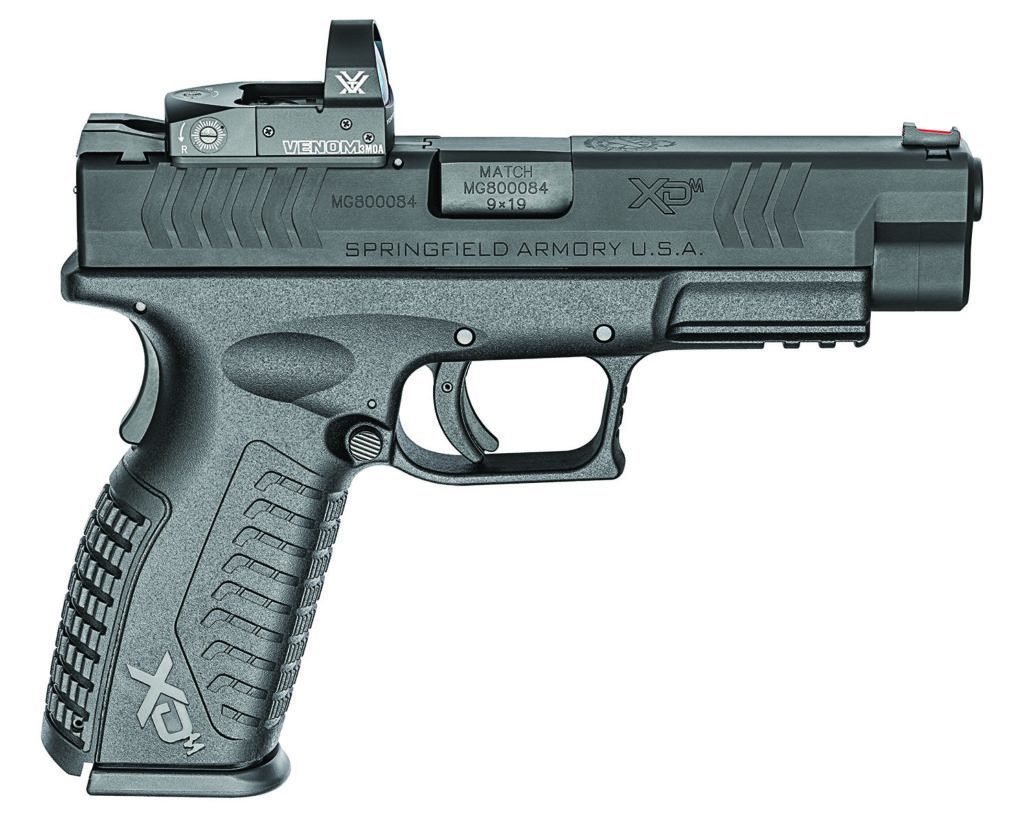
Springfield Armory XD(M) OSP
Springfield Armory XD(M) OSP
Based on Springfield’s highly successful XD series of handguns, the XD(M) OSP (Optical Sight Pistol) comes with three adapter plates allowing the attachment of a variety of RDS.
A cover plate is also included in case the shooter wants to run the gun with only the iron sights, which consist of a two-dot, drift-adjustable rear sight and a fiber optic front sight. They are standard height, so it is not possible to co-witness them with the supplied Vortex Venom RDS.
The Venom features a three minute-of-angle red dot that is adjustable for intensity and is powered by a coin cell that can be changed without the need to remove the unit from the slide. The gun also comes with backstraps of three different sizes, two 19-round magazines and a spare red and green fiber optic insert that is easily installed on the front sight.
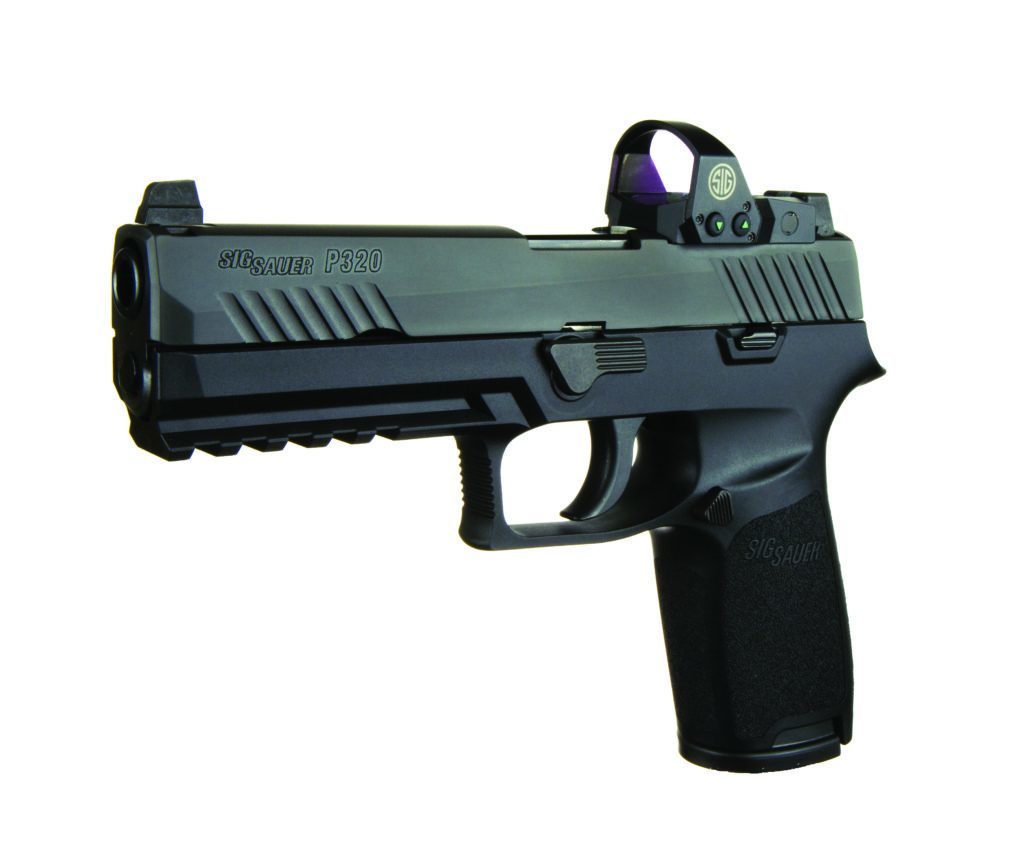
Sig Sauer P320RX
Sig Sauer P320RX
Equipped from the factory with a SIG ROMEO1 Reflex sight with a three minute-of-angle red dot, the SIG P320RX is the RDS version of the company’s striker-fired polymer frame handgun. SIG has a reputation for high-quality, rugged equipment and has recently positioned itself to be “the complete system provider.” This means the company intends to offer everything the shooter needs to be fully equipped for whatever the sport shooter, armed professional or person concerned with personal defense needs in small firearms and accessories.
The ROMEO1 has what SIG calls MOTAC for Motion Activated Illumination. After setting the desired intensity of the dot, the RDS shuts off after a period at rest, but turns itself back on at that intensity the moment it is moved.
The factory two-stage trigger is among the best available in a striker-fired handgun, and the grip frame can be completely changed out to accommodate shooters with larger or smaller hands.






